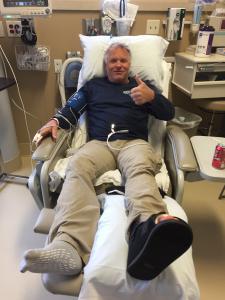Female patient presented with neck pain that had been present for 2 months. The pain came on gradually and without a specific cause. Her vocation is answering the phone for a busy mail order store. She works 40 hours a week, 5 days per week and never weekends. Pain worsens with work, especially by the end of the 8 hour shift. Other pain producers include driving more than 30 minutes, reading more than 30 minutes, and washing hair with the head back. Pain improves with resting the head on a chair or pillow, moving the head in circles, 600 mg of Ibuprofen (repeated 3x/day), and a hot shower. She describes the pain as an ache with intermittent sharp pain that is becoming more frequent, “…when I move the wrong way.” There is no shooting pain into the arms or hands.
Sound familiar? This is a “typical” neck pain patient that Quick read more or view full article presents to chiropractic offices around the world. What is different is that every person is unique and each case must be individually managed. For example, some patients “hate doctors” or are extremely anxious about going to any doctor. This might stem back to a prior “bad experience” with a health care provider at a very young age or perhaps even a more recent event. None-the-less, the approach used in this type of presentation may be best if it is very methodical, reassuring, and fully explained. A “low-force” type of manipulation may be best suited for this type of person as “cracking” of the neck may be too frightening for this patient. On the other hand, a different patient may not be happy unless there is a “good crack” and will not be satisfied until a chiropractic adjustment is performed.
It is equally important in both cases that a complete explanation of,
- What is the condition causing the symptoms?
- What can be done to treat it (that is, “what are my treatment options”)?
- Will the proposed treatment “fit” into my busy schedule, financial situation, and my philosophy about health care?
Providing answers to these questions will usually end with the best results, as the patient will understand the issues most important to them and will have confidence that those issues are understood and appreciated by the doctor. In both cases, management may include
- modifying the work station by switching to a head set rather than pinching a phone between the neck and shoulder;
- evaluating the patient at their work station to check for proper posture at the desk, proper computer monitor positioning, etc. and making modifications as needed;
- teaching the patient cervical range of motion exercises and other stretches that can be done at the work station, multiple times a day, that only take a minute or two;
- cervical traction (if this “feels good” when tested during the exam);
- use of a cervical or contoured pillow;
- neck / upper body strengthening exercises;
- the use of ice as needed;
- an anti-inflammatory diet (for example, a gluten-free diet);
- nutritional supplementation, as indicated. Of course, most of the time, all of these approaches do not have to be included, but are options.
Neck pain, headaches, and upper back pain are conditions are commonly treated by chiropractors. If you, a family member or a friend require care, we sincerely appreciate the trust and confidence shown by choosing our service. We are proud that chiropractic care has consistently scored the highest level of satisfaction when compared to other forms of health care provision and we look forward in serving you and your family presently and in the future.









